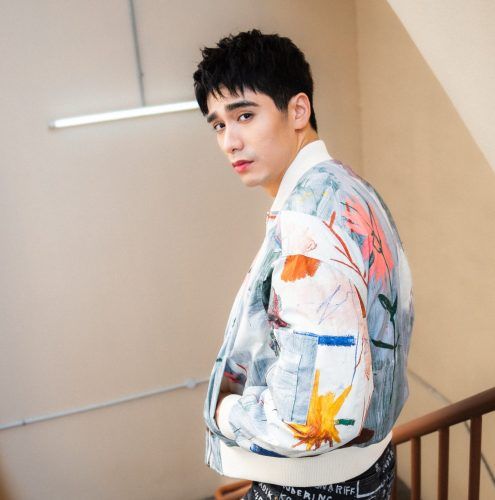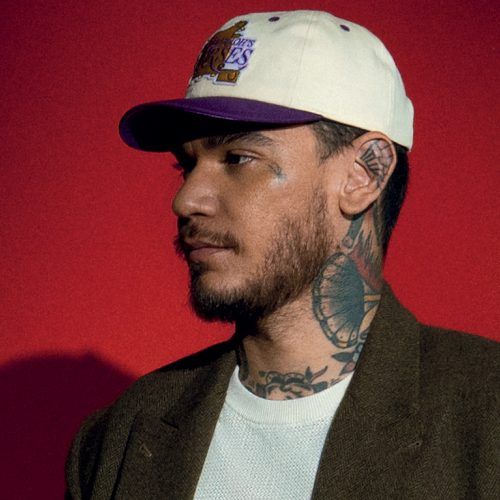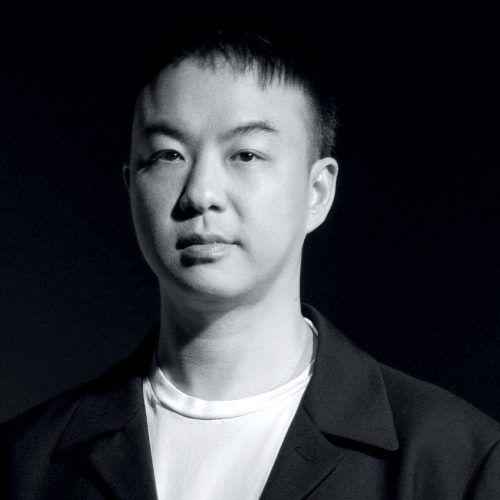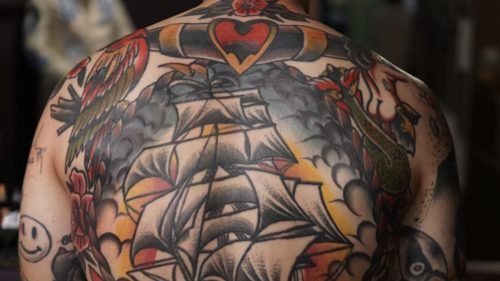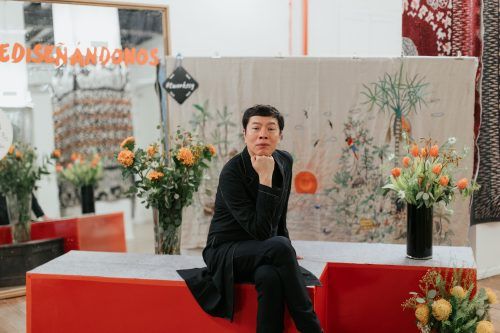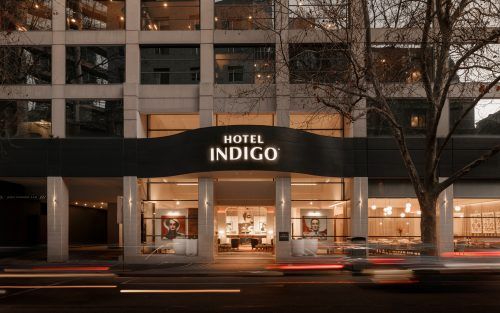In the shadows of towering skyscrapers and amid the echoes of history, a unique form of self-expression has emerged, capturing the essence of Singapore’s multicultural identity
Beyond the gleaming facades and orderly streets, a subculture thrives – one that celebrates individuality, challenges conventions, and dares to push the boundaries of creativity. Welcome to a world where concrete canvas comes to life with the touch of an artist’s brush – the bustling metropolis of Singapore, home to a thriving street art scene.
From the vibrant streets of Kampong Glam to the trendy enclaves of Haji Lane, these murals serve as testaments to Singapore’s soul—a colourful tapestry that binds the present to the past and dreamers to their dreams.

In this story, we speak with two local artists, Speak Cryptic aka Farizwan Fajari and Tiffany Yao, on how and where we can admire these forms of artistic expression, messages of hope, defiance, and social commentary.
How vibrant is the street art scene here in Singapore?
Speak Cryptic: The street art scene, or just the art scene in general, is a small and tight-knit community. We engage in meaningful conversations about our artistic practice, tackling current challenges and issues that artists encounter, all while thoroughly enjoying the process. I would definitely say that Singapore has a vibrant art scene that is always buzzing with a plethora of activities, celebrations and festivals throughout the year, attributed to its diverse and multicultural heritage.
Tiffany Yao: With Singapore’s well-connected public spaces, visitors can experience arts and cultural offerings as they explore the unique buildings and streets that line this island. Simply put, you can find our vibrant street art everywhere in Singapore. I have personally seen an appreciation from both locals and tourists for the street art scene here in Singapore, both on an artistic and commercial value.
What are some of the key areas one should visit to admire local street art?
Speak Cryptic: The neighbourhoods of Chinatown, Kampong Glam, Little India, and Katong-Joo Chiat are a must-visit to experience to admire the amazing work created by artists from Singapore. For example, you can visit Gelam Gallery, Singapore’s first outdoor gallery showcasing murals and framed works of more than 30 artists from different backgrounds, including newly graduated students from Nanyang Academy of Fine Arts (NAFA) and LASALLE College of the Arts, alongside experienced local and foreign artists.
Representing some of the nation’s many ethnic groups, these neighbourhoods feature the best of Singapore’s street art, and most unique architecture, painting a story of Singapore’s history as you walk through the streets. The great thing about public art and street art alike is that you can find it pretty much anywhere. The locations mentioned above are just some of the many.
Tiffany Yao: Little India has a vibrant street art scene with murals that tell the story of the neighbourhood – from its traditional trades to contemporary life. Many of these murals are spotlighted during the annual ARTWALK Little India, a multidisciplinary public art project held in conjunction with Singapore Art Week.
One can also take a stroll along Haji Lane to admire murals, such as the mural on the wall at the junction of Ophir and Beach Roads. It was commissioned by the owner of Piedra Negra (a Mexican eatery) which depicts the Aztecs, the indigenous people dominant in Mexico before the Spanish conquest in the 16th century. While this mural does not have a title, it is easily the most recognisable mural along the street which represents our vibrant art scene.
Where would you say Singapore’s most significant murals are located and any specific reasons why they are located in these areas?
Speak Cryptic: Most public murals are site-specific, which means that they are there for everyone to not only see but also hopefully learn a thing or two about the location’s history. There are plenty of amazing works you can experience within the vicinity of Arab Street, Little India, and Chinatown. I think all these works play a significant role in breathing life into the area, so it’s hard to pick a few.
While it’s worth noting that many of these murals in Singapore have a transient lifespan, often disappearing within a few weeks or months due to the city’s progressive nature, I believe it adds a unique dynamism to the street art scene. It’s a double-edged sword, where on one hand, you’re constantly treated to fresh and exciting new works that emerge, while on the other hand, there’s a bittersweet sense of loss when beloved public artworks vanish. However, artists like Yip Yew Chong have taken the initiative to assist art enthusiasts by publishing maps that guide them to his murals, such as those found in Chinatown, providing a sense of continuity and allowing people to appreciate and locate these cherished works.
Tiffany Yao: I would say Chinatown hosts some of Singapore’s most significant murals that capture the scenes of its colourful and historic past. Some murals even allow passers-by to “step into the picture”. Another of Singapore’s largest murals at the alley connecting Pagoda Street and Temple Street depicts a “Wet Market” scene that allows you to visualise old trades such as hair braiding and ear cleaning.
The mural “Chinese Opera”, at the junction of Temple Street and South Bridge Road, lives on in a scene that captures this once popular form of street entertainment. This is representative of the old trades and jobs that were once an integral part of Singapore’s cultural tapestry, and while they are less common in modern Singapore, they remain a nostalgic reminder of the city’s rich heritage.
What makes the artwork so special is that the art styles constantly vary, featuring the differences and uniqueness of many ethnic groups coming together in the streets of Singapore, paying homage to Singapore’s unique history.
Street art often tells the story of the city, its people and culture. What’s the underlining message or theme that street artists have for their murals?
Speak Cryptic: Most street artworks and public murals tend to evoke reactions based on their location, be it on a historical, spiritual, or emotional level, and in fact, at most times, on all three levels. In my opinion, the best thing about art is that it is a reflection of the person who is looking at it. And in that sense, the artwork becomes an interpretation of an individual’s perspective and experience.
For many artists, striking a balance between creating work that reflects their own unique voice and resonates with others can be a challenge. However, I firmly believe that it is the artist’s responsibility to infuse as much artistic value as possible into a given space, especially when it holds significant personal memories.

For example, one of the most satisfying murals I have created was for the Substation, named ‘Sing Along if You Know the Words’. This venue was practically my second home, where I attended local punk shows every weekend, forged new friendships, and reunited with old ones. In paying homage to this cherished place, I painted my characters adorned in attire reminiscent of the people I encountered and captured the electrifying excitement and pure joy I experienced while watching bands perform. Even today, this mural remains one of my most treasured creations due to the profound connection I felt with the building, its community, and its rich history.
Tiffany Yao: Street art in Singapore often serves as a platform for artists to express various messages and themes. In my opinion, there are two main branches of street art in Singapore. One that represents the Singaporean lifestyle, which sparks nostalgic memories and has locals reminiscing about the old days. And the other represents a Western lifestyle, which inspires one to step outside of the box and embark on a creative journey. Ultimately, street art in Singapore serves as a visually captivating medium for artists to communicate messages, provoke thought, and engage with the public in a dynamic and accessible way.
Should more be done to nurture the street art movement here in Singapore?
Speak Cryptic: Yes, I do think that more can be done to nurture the street art movement here in Singapore. Street art has been around for a while, even before anyone really paid attention to it. From being misjudged as ‘vandalism’, the art form has now evolved to be one of the most popular and well-received in Singapore. In recent years, there has been a growing appreciation for the role of art in expressing and reflecting the passion and diverse perspectives of Singaporeans. Additionally, street art only exists because of its focus on community, so as long as there is a community – there will be art on the streets. It doesn’t need a lot, perhaps it simply needs time. Singapore also currently highlights street artists and murals through events during the year, which nurtures the scene and community.
Tiffany Yao: I think it would be beneficial to continue to nurture the street art movement here in Singapore. One of my fondest memories was back in 2018 when an abandoned building was made available for some local artists to experiment with and hone their street art skills.
We were able to play, explore and learn in a way only possible with that huge space. Street art is such a unique craft, hard to learn with a pen and paper. Having access to this amount of space was an incredible experience I will always be grateful for. I think it would be great for the next generation of artists to also have such a formative experience.
Where do you think Singapore ranks in the region as a destination for street art tourism?
Speak Cryptic: While I do believe that every city is unique and has its own form of street art, representation of their history, culture, and arts, Singapore undoubtedly ranks first in my heart.
Again, it’s not a competition by any means, but I have to say that the street art in Singapore is my street art. The street art here feels like home to me and I will continue to support, document and participate in its culture- simply because it is mine and ours, and I hope that people want to come to Singapore to experience this because it’s meaningful to all of us Singaporean artists.
Tiffany Yao: Singapore’s street art tourism scene ranks as one of the best in Asia, in my books. We have artists coming in from all over the world to create art pieces that blend into the city, and you can easily spot some during your visit, along your stroll or via our tourist-friendly public transport services. Singapore’s unique identity and landscape entice artists from across the globe, as well as visitors to experience their incredible masterpieces. It is a great location for art lovers and enthusiasts to learn about and appreciate street art.
We have seen several cities promote the art form for Street Art tourism. Is this a pathway that Singapore is focused on as well?
Speak Cryptic: Certainly. Street art is a great gateway to learning more about a particular location. When I created ‘An Ocean Without an Anchor’ as part of the Singapore Night Festival 2022, I intentionally drew attention to its location, Raffles City, which resided along the shoreline before the land reclamation project in 1822. The work is a nod to the rich history of the Bugis people, who were known to be seafarers. There are an endless number of ways to experience art including appreciating its historical value, and that is the beauty of street art.
Public artworks hold a unique significance as they are created for the enjoyment of the public, serving as a gateway for those who have never encountered murals or sculptures before. Personally, it was Ng Eng Teng’s sculpture, “Mother and Child,” that ignited my passion for the arts, exemplifying the transformative power of public art.
If we consider art as a reflection of our environment, then the works of diverse artists in Singapore, ranging from the street art collective RSCLS to graffiti artists like SLACSATU and SYCO03, as well as muralists like Yip Yew Chong, and the dedicated individuals who document these public artworks, such as @rolypolygirl on Instagram, beautifully represent the essence of this vibrant city-state known as the “little red dot.” Street art is a great way to have people from other parts of the world learn about our little island and its vibrant beauty and heritage.

Tiffany Yao: Absolutely, Singapore is blessed with a rich street art scene that runs deep in culture and heritage. From colourful murals adorning building facades to captivating visuals in hidden alleys, the diverse range of street art showcases the creativity and talent of local and international artists. Visitors are drawn to Singapore’s neighbourhoods, such as Kampong Glam and Tiong Bahru, to explore these artistic gems, often seeking out guided tours or self-guided walks to discover the latest installations.
Home to a series of highly anticipated regional and international art events, Singapore has become an attractive arts hub for artists and art lovers across the region. There are a few events throughout the year that showcase some of our most incredible artists and their artworks. Singapore Art Week is one of them, which also attracts many local and international visitors. I hope these events continue to encourage young local artists to join the scene and explore all that it has to offer.
(Header Image: State Of Decline by Speak Cryptic at the ArtScienceMuseum / Thumbnail: Tiffany Yao)




